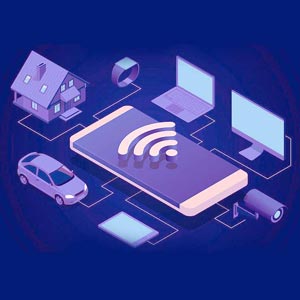THANK YOU FOR SUBSCRIBING

Interconnection: The Heart of Smart Healthcare
Tejaswini Tilak, Senior Director, Vertical Marketing, Equinix


Tejaswini Tilak, Senior Director, Vertical Marketing, Equinix
Across the Asia-Pacific region, healthcare is being forced to adapt to rising costs, changing regulations, growing demand from patients for personalized care and an increasing number of digital-savvy service users that expect app-based, always-on and immediate solutions. Shifts in population are also having an impact—according to Frost & Sullivan, by 2025, about 25 percent of Asia’s citizens will be aged 65 years and above, and in need of a high volume of complex care.
Today, requirements for real time, secure communications and data exchange with patients, partners, health ecosystems and network/cloud providers are forcing healthcare companies to invest in new interconnected digital value chains, R&D, diagnostics and care delivery models that break down traditional IT infrastructures.
Delivering on expectations through edge innovation
According to the Frost & Sullivan’s ‘Asia-Pacific Digital Health Outlook’ report commissioned by Equinix, the top-of-mind issues healthcare IT decision makers face when driving the adoption of digital services include:
• Network connectivity and bandwidth: Ensuring speed, access and high-quality experiences
• Impact on productivity and ROI: IT downtime, poor application performance, and unintuitive workflows that impact investment returns
• Data security: New technologies, sources, and use of health information are prompting healthcare organizations to take a closer look at their data security, privacy, and compliance architecture
• Cloud Adoption: Home monitoring, Internet of Medical Things (IoMT), precision medicine, and drug discovery depend heavily on cloud adoption in healthcare
To address these concerns, an interconnected platform for data continuity, big data, analytics and AI, precision medicine, and IoMT is required to deliver a faster seamless end-user experience, increase ROI on technology, and address cybersecurity issues.
By leveraging an Interconnection Oriented Architecture approach, healthcare companies can re-architect IT for security and compliance whilst enabling new digital capabilities and scalability. They can then create agile, digital-enabled services to better cope with increased demand during peak periods and more easily accommodate mobile users to deliver personalized, outcome-based patient care.
Strategic interconnection control points, such as an IT architecture based on interconnection and colocation, mean healthcare organizations can incorporate new digital technologies, integrate health ecosystems, and access network, cloud and IT service providers to scale patient-focused digital healthcare services.
Smart healthcare in action
Healthcare stakeholders are embracing digital transformation to improve service capacity and delivery. The Global Interconnection Index Volume 2, published by Equinix, predicts that the Healthcare and Life Sciences industry in Asia-Pacific will grow its use of Interconnection Bandwidth by 79 percent CAGR by 2021.
Examples of this digitization are already prevalent across the region. In 2016, Singapore launched the Healthhub—a one-stop online health information and services portal, which functions as a digital healthcare companion for citizens, providing information, knowledge, tools and services to help them take greater ownership of their health. Meanwhile in Japan, the government is launching initiatives to promote the development of AI and robotics in medical care, medical devices and pharmaceutical R&D.
Having the right ecosystem partners for an IoT platform will help healthcare companies in Asia-Pacific to realize the full potential of smart services while they adopt new innovations like AR, VR and AI, which are already in pilot phases and expected to enter Asian markets by 2025. Those who fail to embrace digitization risk losing market share to disruptors, face profitability challenges and be increasingly exposed to cybersecurity and compliance issues. For ‘smart’ healthcare to come true, interconnection is crucial in order to deliver a better user experience and smarter services for the providers and medical professionals that help us take care of our greatest asset—health.
Check this out: Top Healthcare Startups











